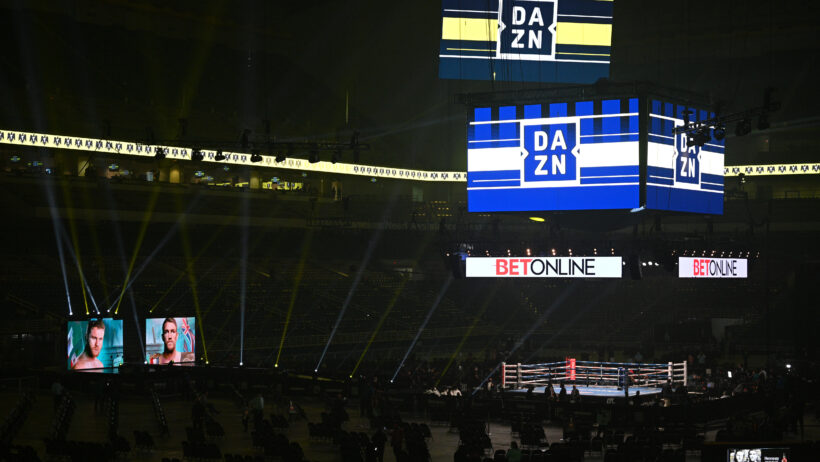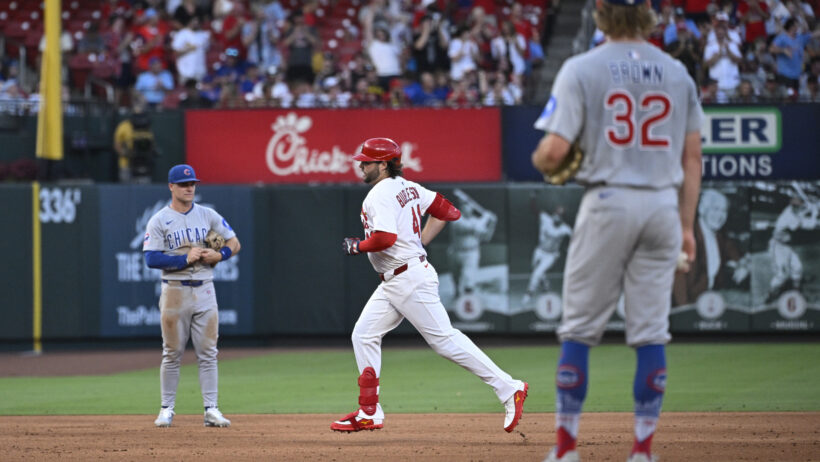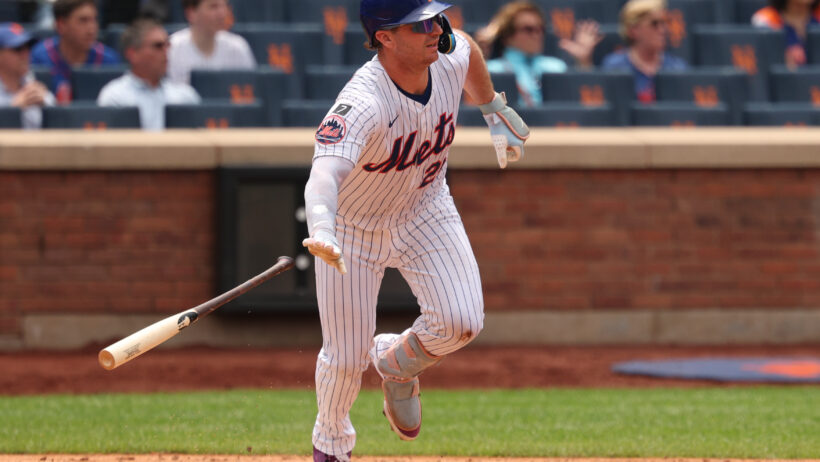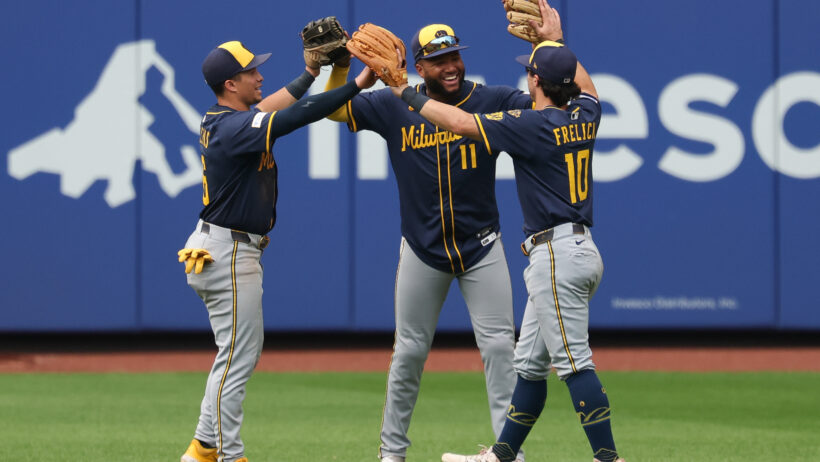Run Line in Baseball Explained: Point Spreads for MLB Betting
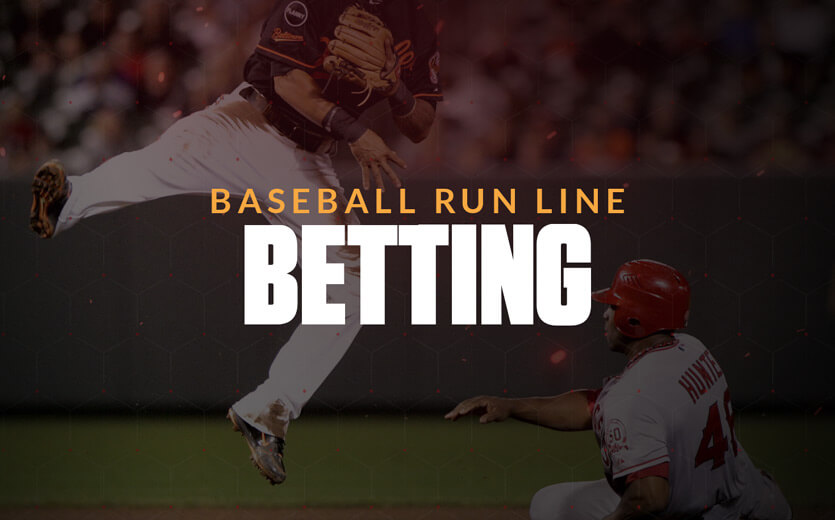
Run lines present an interesting betting opportunity for baseball fans or anyone who prefers to wager against the spread. Analyzing the run line can be complex at times, but it can be a highly profitable bet for those willing to put in the effort.
- BETMGM SPORTSBOOK
USE CODE SBD1500 & GET $1,500 BACK IN BONUS BETS
- BET365 SPORTSBOOK
BET $5 & GET $150 IN BONUS BETS WITH CODE DIME365
- FANATICS SPORTSBOOK
BET & GET UP TO $1,000 IN BONUS BETS!
- DRAFTKINGS SPORTSBOOK
BET $5 & GET $150 IN BONUS BETS INSTANTLY!
- FANDUEL SPORTSBOOK
BET $5 & GET $150 IF YOUR BET WINS
- CAESARS SPORTSBOOK
USE CODE SBD2DYW & BET $1 TO DOUBLE THE WINNINGS ON YOUR FIRST 10 BETS!
Must be 21+. GAMBLING PROBLEM? Call 1-800-GAMBLER (CO, IL, KS, KY, MD, MI, NC, NJ, OH, PA, TN, VA, VT, WV, WY); (800) 327-5050 or gamblinghelplinema.org (MA); (877) 8-HOPENY (NY); 1-800-NEXT-STEP (AZ); (888) 789-7777 (CT); 1-800-BETS-OFF (IA); 1-800-9-WITH-IT (IN); mdgamblinghelp.org (MD); morethanagame.nc.gov (NC); 1800gambler.net (WV)
Use the tips outlined in this guide to get started betting on the run line, and you’ll begin to see your bankroll grow in no time.
What does the Run Line Mean in Baseball?
The run line is the baseball equivalent of point spread betting, although the number rarely changes, just the odds connected to it.
In general, the run line is set at -1.5 runs for the favorite and +1.5 for the underdog, meaning that if you bet the favorite on the run line, they must to win by at least two runs to win your bet. Conversely, if you bet on the underdog at +1.5, you win the bet if your pick either wins the game outright or lose by only one run.
By leaving it at 1.5, however, sportsbooks are rarely putting comparable odds on either side of the bet. That’s different than how they would handle a football game where each side of a 6.5-point spread would come in at -110.
There are multiple ways to bet on baseball despite the fact that most casual fans only wager on the moneyline. The run line presents one of these additional options, and it is very similar to betting the point spread in football.
How to Apply MLB Run Line Techniques for Betting
Now that you know what the run line is in baseball, an MLB run line is essentially the exact same thing within a MLB context. Betting on the MLB run line is done through a sportsbook like DraftKings, BetMGM, or Caesars. The MLB team you choose to win the run line generally needs to win by a minimum of two runs for you to win the bet.
MLB Run Line Example
Let’s say the New York Yankees are playing the Boston Red Sox. The run line might look like this:
- Yankees -1.5 (+120)
- Red Sox +1.5 (-140)
In this scenario, if you bet on the Yankees -1.5, they need to win by 2 or more runs for you to win. A $100 bet would win you $120 in profit.
If you bet on the Red Sox +1.5, you would win if the Red Sox win the game or lose by only 1 run. You would need to bet $140 to win $100 in profit.
Key Points About the Run Line
- Standard Spread: The 1.5 run spread is the most common, but sportsbooks may offer alternate run lines (e.g., +/- 0.5, +/- 2.5) with adjusted odds.
- Odds Variation: Unlike point spreads in other sports which often have similar odds on both sides (-110 is common), the odds for the run line can vary significantly based on the perceived difference in skill between the teams.
- Strategic Use: Bettors might use the run line to get better odds on a strong favorite (by taking them at -1.5) or to have a higher chance of winning with an underdog (by taking them at +1.5).
- Game Completion: Generally, for a run line bet to be valid, the game must go at least 9 innings (or 8.5 innings if the home team is winning).
The run line provides an alternative way to bet on baseball games beyond just picking the outright winner (moneyline). It introduces the margin of victory/defeat into the equation, which can lead to more appealing odds depending on your analysis of the matchup.
MLB Games Are Closer in Score Than You Might Think
In baseball, a single run can matter a lot: Roughly 28% of all MLB games are decided by one run. This explains why the run line is nearly always set at +/- 1.5, regardless of which teams are playing.
Roughly 28% of all MLB games are decided by one run.
When betting on the run line there are four potential outcomes that relate back to the bet:
- Favorite wins by two or more
- Favorite wins by one
- Favorite loses by one
- Favorite loses by two or more
The chart below illustrates the likelihood of each outcome, based on a sample size of tens of thousands of games. There will be short-term variations within seasons, but this is a great reference point and should hold true over the long-term.
Underdogs Perform Exceptionally Well Against the Run Line
The table above shows that the favorite loses the game outright 43% of the time at home and 44% of the time on the road. When you add in one-run wins for the favorite, which amount to a loss on the run line, then the favorite is a losing bet 61% of the time at home and 56% of the time on the road.
Underdogs “win” or “cover” run lines bets 61% of the time at home, and 56% of the time on the road.
Does that mean you should always take the underdog? Not so fast. As you’ll see in the next section, -1.5 favorites can still have value.
The Price You Pay: Taking
You already know that the run line in baseball is analogous to the spread in football, in that the favorite has to win by a certain number of runs/points to register a win for bettors.
However, there’s a crucial difference between spread betting and run line betting, and that’s the potential return on your bet.
MLB betting sites are well aware that underdogs cover the run line a lot more than favorites. For that reason, you will (almost always) have to bet more on the underdog in order to win the same amount of money.
The payout on run line varies greatly from game to game. This is because the relative value of one run varies greatly between games, depending on which teams are playing and which pitchers are starting.
The most important factor in determining the value of a run in a single game is assessing its correlation to the projected total for that game (i.e. the combined number of runs scored by the teams that’s relevant to baseball totals bets.
Bet $1 & Double Your Winnings On Your First 10 Bets!
Doing so is actually quite simple. If a game has a projected total of 7 runs, then 1.5 runs account for 21.4% of the expected total. Consequently, sportsbooks will make you pay a lot for that run.
If a game has a projected total of 10 runs, 1.5 runs account for only 15% of the expected total, and you won’t have to pay as much to “give” those runs to the underdog.
The other big factor in determining the payout for the run line underdog is the comparative strength of the teams playing, which you can see by looking at the money line for the game. If a run line underdog is also a big money line underdog, it won’t cost as much to bet on them at +1.5.
The Run Line in Action
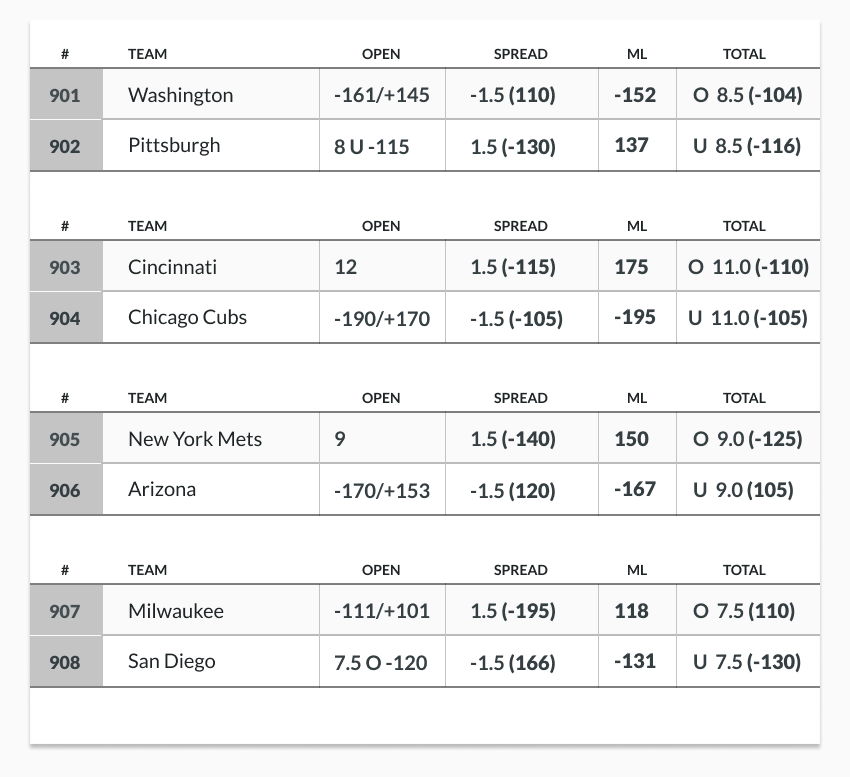

In this chart, you can see that Chicago vs Cincinnati has a projected total of 11 runs and that Cincinnati is a big +175 underdog on the money line (ML). For those reasons, taking the Reds +1.5 is only -115 (meaning you need to bet $115 on Cincinnati to win $100). With 11 runs expected, it’s not very likely that the outcome will be decided by a single run.
The game between Milwaukee and San Diego lies at the other end of the spectrum. It has a projected total of only 7.5 runs, and Milwaukee is only a small +118 underdog on the money line.
Therefore, Milwaukee +1.5 runs has a payout of -195, meaning the sports book will make you risk $195 just to win $100. In essence, by giving Milwaukee those 1.5 runs, you have taken a short underdog (+118) and turned them into a large favorite (-195).
The Price You Pay: Giving
If you wanted to get a bigger payout from the San Diego/Milwaukee run line, you could take San Diego -1.5 runs at +166. (Remember, since that’s a positive number, it means you only have to bet $100 in order to win $166.) But the chances of San Diego winning by two runs or more are relatively low.
If you refer back to the percentages outlined above, you’ll recall that home favorites only win by two runs or more 39% of the time. Of course, that number is for all games, including ones where the home team is a big favorite on the money line. In this case, San Diego is only a tepid moneyline favorite.
The Cubs, on the other hand, are a big money line favorite and are expected to play a high-scoring game. As a result, Chicago -1.5 has a lower payout of -105. (You must bet $105 to win $100.)
Road favorites win by two runs (or more) at a higher rate than home teams.
If you follow sports at all, you’ve probably heard the term “home-field advantage” many a time. So it might come as a shock to see that road favorites win by two runs (or more) at a higher rate than home teams. But there’s a simple explanation for this.
Remember that home teams in baseball do not bat in the ninth inning if they are ahead. If they are up by any margin after 8.5 innings, the game is over. Removing that ninth at-bat takes away a whopping 11% of the home team’s opportunities to score.
Advanced Considerations in Run Line Betting
We have looked at the basic pros and cons for both sides of the run line. But know that there are many more variables that come into play, and sportsbooks tend to be on top of these and factor them into the line.
If you’re ready to take your run line handicaps to the next level, considering the following factors is an obvious place to start:
- Which pitchers are starting that day
- Recent bullpen activity for each team (tired and overworked bullpens will lead to higher totals)
- Key injuries to offensive stars that could affect the lineup and your batting order strategy
Games can also be canceled for a variety of reasons, such as rain-outs or lightning storms. If a game does not go 8.5 innings, run line bets are nullified. If a game is called due to weather in the 6th inning, the bet is canceled, even if your team is winning by ten runs. It does not matter that MLB calls the game official and declares a winner.
There Are Always More Options on the Run Line
Many sportsbooks offer “alternative” run lines like the example shown below. In this instance, the alternative run line allows you to take the underdog to win the game by two or more runs. While this is clearly a highly unlikely outcome on the face of it, the potential payout is massive.
In the case of rotation number 3910, the San Francisco Giants, they are prohibitive underdogs (+140) on the money line against the Dodgers. So the chances of them winning by two runs or more are not great. But, if they do, they will net their backers a pretty penny, since the payout on San Francisco -1.5 is +300.
That +300 number equates to an expected win-rate of only 25%, and we know from the chart above that road favorites (in this case, the Dodgers) lose by two or more runs 28% of the time, making a bet on the Giants worthy of consideration.
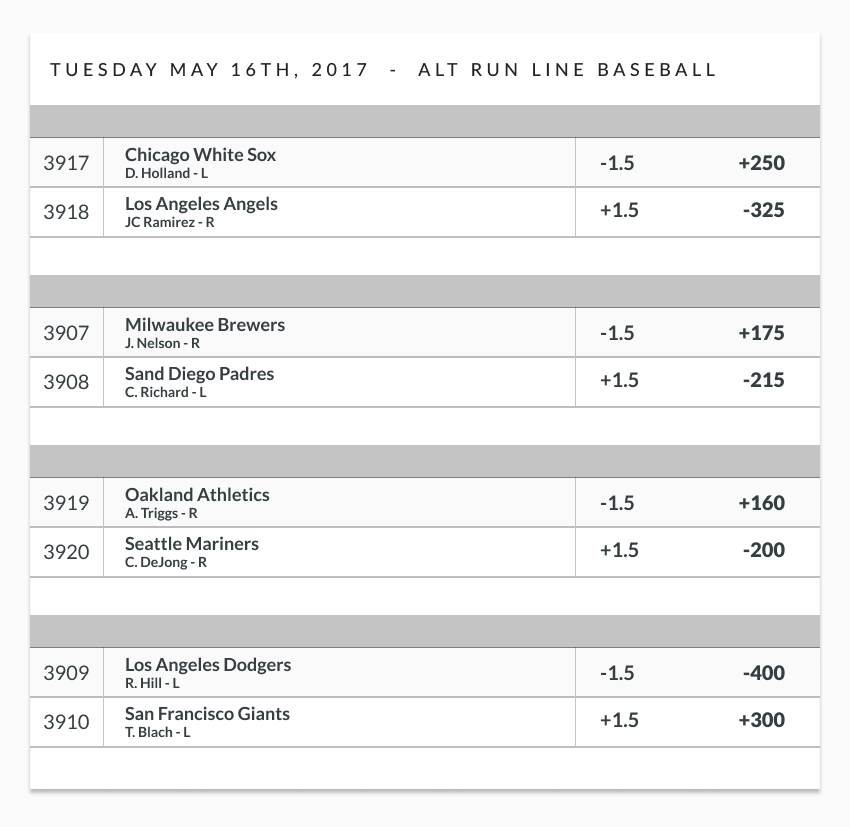
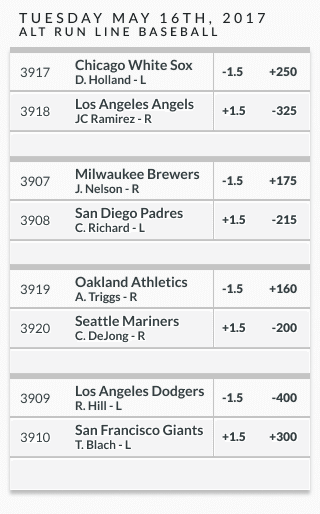
Or, if you think the Dodgers might be in for a close game, you could get the favorite +1.5 runs. Of course, you have to pay -400 which is something most bettors – beginner or otherwise – will only want to consider in a parlay.
If you are not willing to lay -150 on the money line (which requires the Dodgers to win outright at a 60% rate), then it doesn’t make sense mathematically to take -400 (which requires the Dodgers to win or lose by one run at an 80% rate). However, those options are out there.
In the chart above, you would be better off taking the White Sox at -1.5 (+250) for no other reason than the fact that you are assured as a road team of getting 27 outs.
One of the most affordable ways to play a large money line favorite is to split the bet evenly between the money line and the run line.
One of the most affordable ways to play a large money line favorite, assuming you don’t want to lay -200 (or more), is to split the bet evenly between the money line and the run line. Of course, if the team wins by one, you lose half of the wager, but it does mitigate possible damage.
Some books offer a -1 run line, which is priced exactly the same as splitting the bet between the run line and the money line. Then, if your -200 team does win by one run, you push the wager.
MLB Run Line FAQ
Still have questions about the MLB run line? Let’s see if we can help you out.
What is the MLB run line?
The MLB run line refers to a specific type of baseball run line that only applies to MLB. It's essentially MLB's version of point spread betting.
How does the MLB run line work?
The MLB run line is generally set at +1.5 runs for underdogs and -1.5 runs for favorites. That means if you bet the favorite in a MLB game, they need to win by at least two runs for you to win your bet.
How do I place a bet on the MLB run line?
Many sportsbooks including DraftKings, BetMGM, Caesars, and more will let you bet on the MLB run line if you use their app or site.
How is the MLB run line different from moneyline betting?
Moneyline betting only requires you to pick a team to win the game by an unspecified amount of runs. MLB run line betting requires a team to win by a set number of runs.
Is the MLB run line a good bet to make?
While the moneyline is probably the most popular type of bet in sports, betting on the MLB run line is a fun way to bet on professional baseball.
What's the percentage of MLB games are decided by one run?
Historically, about 28% of MLB games are decided by one run.
What does 1.5 run line mean?
A 1.5 run line is standard, and means the favored team (-1.5) must win by 2 or more runs to win the bet. An underdog (+1.5) wins the bet if it wins the game outright or loses by just 1.
Get Started Betting on Baseball Today!
To summarize, there is no magic bullet or perfect mathematical scenario to winning on the run line. There are things you can do that will minimize the risk, and that is how recreational bettors usually look at things. They might decrease your ROI, but any positive ROI in sports betting is a good thing.
- BETMGM SPORTSBOOK
USE CODE SBD1500 & GET $1,500 BACK IN BONUS BETS
- BET365 SPORTSBOOK
BET $5 & GET $150 IN BONUS BETS WITH CODE DIME365
- FANATICS SPORTSBOOK
BET & GET UP TO $1,000 IN BONUS BETS!
- DRAFTKINGS SPORTSBOOK
BET $5 & GET $150 IN BONUS BETS INSTANTLY!
- FANDUEL SPORTSBOOK
BET $5 & GET $150 IF YOUR BET WINS
- CAESARS SPORTSBOOK
USE CODE SBD2DYW & BET $1 TO DOUBLE THE WINNINGS ON YOUR FIRST 10 BETS!
Must be 21+. GAMBLING PROBLEM? Call 1-800-GAMBLER (CO, IL, KS, KY, MD, MI, NC, NJ, OH, PA, TN, VA, VT, WV, WY); (800) 327-5050 or gamblinghelplinema.org (MA); (877) 8-HOPENY (NY); 1-800-NEXT-STEP (AZ); (888) 789-7777 (CT); 1-800-BETS-OFF (IA); 1-800-9-WITH-IT (IN); mdgamblinghelp.org (MD); morethanagame.nc.gov (NC); 1800gambler.net (WV)
Curious to learn more about the ins and out of betting on baseball, or just betting on sports in general? Visit our comprehensive guide on how to bet on sports, or take a glance at our 101 guide to betting on baseball. While you’re at it, make sure you claim the ESPN BET sign-up bonus to get even more value out of your baseball betting experience.

Evergreen Writer/Editor; Sportsbook Expert
With nearly two decades of experience in sports media, Paul Costanzo turned his professional attention to sports betting and online gambling in January of 2022. He's covered every angle of the industry since then, managing and creating content for PlayMichigan and The Sporting News, and now SBD.

